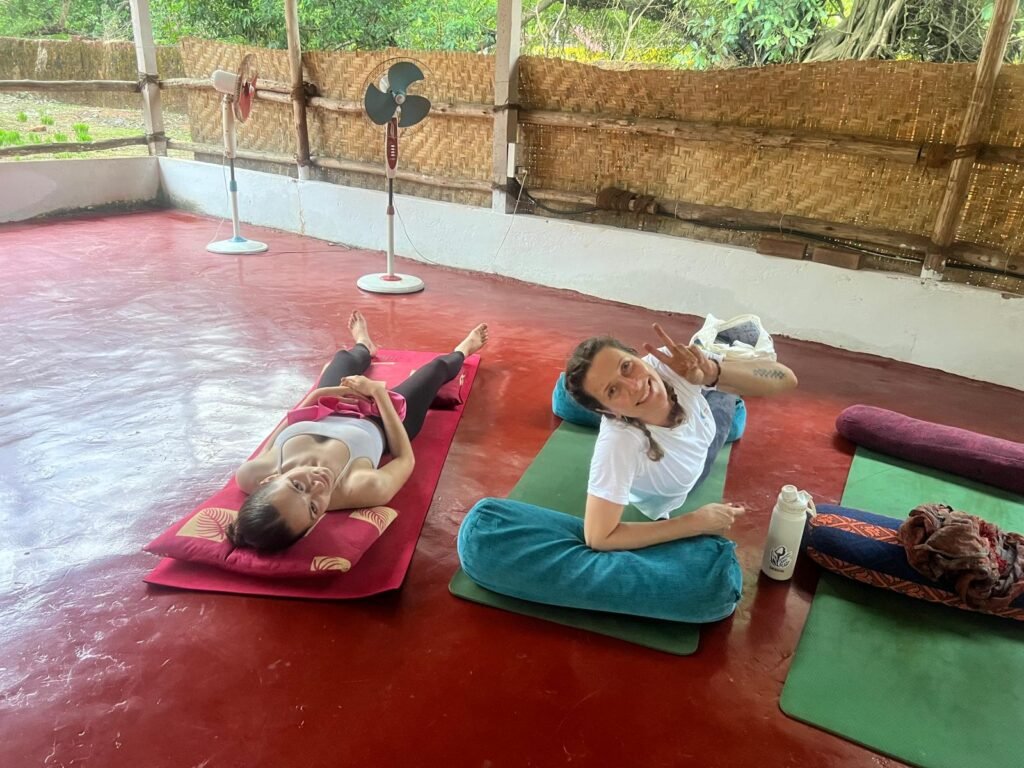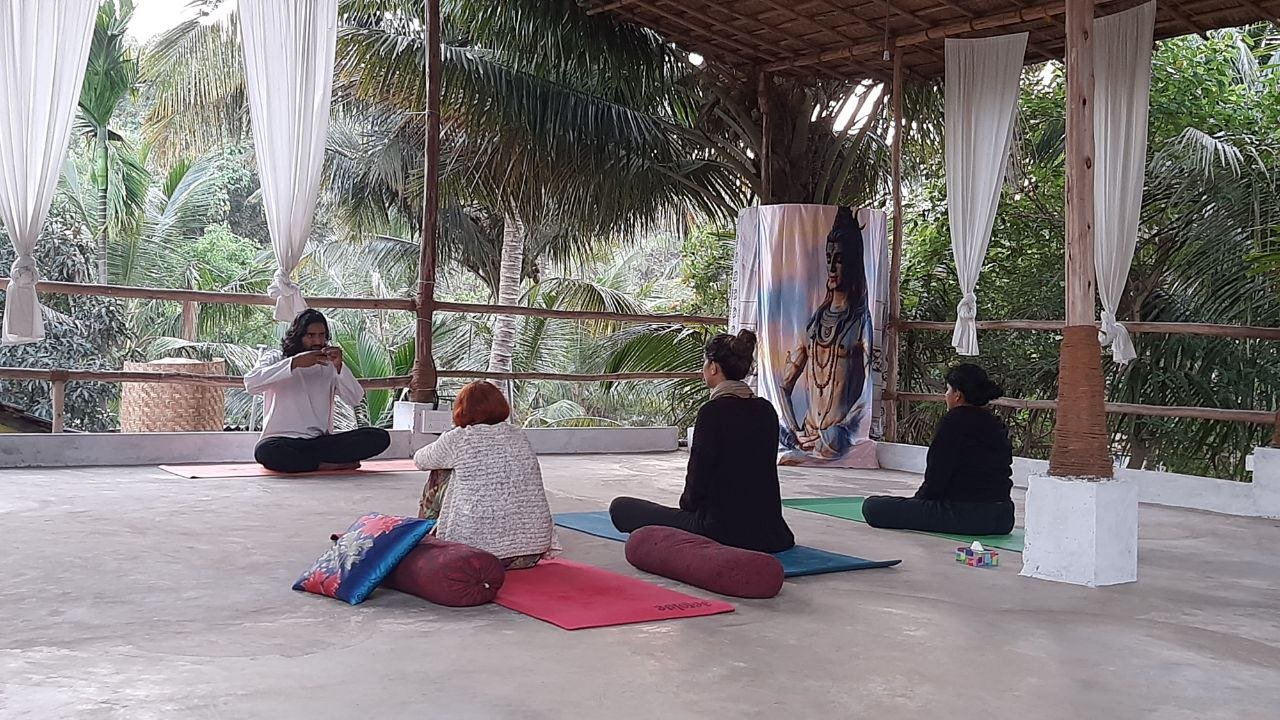Teaching yoga is an extremely fulfilling and unique experience, which also involves personal evolution of a person. The jump from being a dedicated yoga student to a certified yoga instructor can be a bit overwhelming for you at first. You initially start your journey by absorbing all the knowledge about all the yogic aspects and philosophical teachings and after this you stand at a threshold where you can share all this wisdom to the world.
Yoga teaching is a journey and not just about a destination. The entire journey allows you to unleash your true self and practice consistently to refine your own skills. You discover yourself while being in the journey of becoming a yoga teacher and find internal balance to elevate your overall wellness. You grow physically, mentally, emotionally, and spiritually and try to become the best version of yourself. In this article, you will be learning about how you can start your teaching journey after completing the yoga teacher training program.
Understanding the Basics

Before understanding the ways to start teaching yoga, you must know the insights about the different dynamics of yogic universe. It is essential to be familiar with the basics of several yoga asanas, ancient philosophies, anatomy and physiology, and meditation. Learn from the traditional texts like Bhagavad Geeta, Upnishads, and Patanjali Yoga Sutras which are extremely important for understanding the principles of yoga and its deeper purposes in overall well being.
Before you begin teaching yoga professionally, enhance your own practices and learn to stay consistent. Daily sessions of yoga will assist you in incorporating the yogic learnings in your everyday life that will resonate with your students when you start teaching professionally. Learning the refined yoga skills for different asanas, and synchronized breathing techniques acts as a foundation for your yoga teaching journey.
Complete your Yoga Teacher Training Program
The first and foremost step is to enroll yourself in a yoga teacher training program from a Yoga Alliance, USA certified yoga school. It is essential to choose the perfect program for yourself according to your personal needs and interests so that you become a good yoga instructor. Enrolling yourself in these programs provides you guidance from the expert yoga instructors in order to get deeper insights of the yogic universe. Make sure to select the program that reflects your vision and aligns your goals. Always consider the factors like destination of the yoga school, type of yoga style, level of program, and its impact on your yogic journey.
Yoga teacher training program involves a structured curriculum that has sessions for all the different asanas, ancient yogic philosophies, meditation, pranayama, adjustment and alignment, physiology and anatomy, teaching methodologies and class sequencing. If you wish to become a certified yoga instructor, then you must complete the Yoga Alliance accredited YTT programs. Register for the certification once you have graduated from the training program and start teaching yoga professionally in any corner of the world.
Building a Strong Foundation
Having a strong foundation of yoga is extremely crucial if you wish to start teaching yoga professionally. Master the different asanas and practice the correct alignment so that you can offer safer and more knowledgeable classes to your learners. Having your basics clear before teaching yoga will help you in building a reliable reputation that will further help you with the teachings. Learn about human anatomy and physiology so that you can address the different requirements of every individual clearly. Have clear basics about synchronized breathing techniques and meditation processes as it is a major part of your yoga teaching profession.
Teaching Methodologies
If you wish to teach yoga professionally, it requires you to have good communication skills and a clear teaching style that will help students grasp knowledge efficiently. For this, the teaching methodology sessions in the yoga teacher training programs are important to attend. You get to learn that spreading the yogic wisdom is much more than just showing the different poses, it is about resonating with your students deeply so that they feel supported. These sessions will prepare your skills to convey your knowledge to your students and communicate with them with ease.
The teaching methodologies sessions in your YTT program teach you verbal cues and give you immediate feedback regarding your teaching skills. With the help of this, you can easily refine yourself under the guidance of experts and become an authentic and certified yoga teacher in the future.
Deepening Personal Practice
Your personal practice is always a priority if you are a yoga instructor. Through this, you can elevate your own knowledge and yoga skills in order to become an inspiration for your students. When you consistently practice yoga, you reconnect with yourself deeply and keep improving your relationship with yoga. Keep exploring different yoga styles and upgrade yourself regularly to become a more supportive and authentic teacher for your students.
Expand your yogic knowledge about different dynamics of yoga styles like Hatha, Vinyasa, Ashtanga etc in order to understand every perspective of life. This will help you resonate with your class clearly and keep you internally grounded.
Gaining Teaching Experience
Learn to participate in the yoga teacher training programs that offer hands-on teaching experience to you so that you get immediate feedback regarding your skills. Make sure to have a supportive environment that will help you to refine your skills and practice consistently to improve yourself. After graduating from the program, you can also start your journey by offering classes in small yoga studios or workshops in order to gain experience of handling yoga sessions efficiently.
When you are conducting the classes, ensure that you are given proper feedback regarding your teaching skills so that you refine them for the future. Welcome all the constructive feedback and advice and use them to improve your teaching skills. Once you have enough experience of such batches, reach out to different yoga schools for teaching or start marketing your online yoga classes.
Embracing the Yoga Community
Embrace the yoga community you form during your yoga teacher training period as they will help you adapt to different new perspectives of life. The bonds formed during the yoga sessions fosters a sense of belongingness in you and provides you with a supportive environment for your practice. Attend the local yoga retreats or classes to form communities with the like-minded individuals and form some meaningful bonds of a lifetime..
One of the best ways to keep upgrading your yogic wisdom is by attending different workshops and retreats in order to connect with new individuals of different backgrounds. The connections you form during these sessions are wholesome and meaningful and allows you to stay motivated towards yoga. Learn the different cultures and traditions of people of different backgrounds and expand your knowledge.
Incorporating the Art of Breathing
Incorporating the art of breathing in your lifestyle is a significant part if you wish to start teaching yoga professionally. Prana is the center point of every yogic practice and is said to be the bridge between your mind, body, and soul. So, in order to get different insights about techniques of breathing, you need to learn about pranayam, as it assists your body to unwind and relax completely.
Pranayama is considered to be crucial for improving blood circulation and also keeps your body distant from other chronic diseases. To understand the art of breathing, you should practice it with other yoga asanas. This will train you to become an authentic and efficient teacher in the future.
Designing you Class around your Students
It is essential for you to make your classes inclusive for all the students you are teaching. Curate your sessions in such a way that the needs and requirements of every individual resonates with your teachings. It is your responsibility as a yoga teacher to engage with every student and offer them maximum benefits of the yoga class.
But what does inclusiveness in yoga sessions mean for you? It signifies that the teachings you are providing must be in a way that your students learn the different aspects of yoga with clarity. Ensure to make your sessions fun and interactive in order to have a deeper impact on every individual. Have a supportive and welcoming environment in your yoga class for people of every background.
Engaging in Effortless Communication
Communicating fluently is one of the majorly important aspects that makes you an authentic yoga teacher over time. To understand how to communicate efficiently with you class you first need to make connections with them individually. Use clear language and teach them different yoga poses in the easiest way. Make sure that the environment of your class is supportive and comfortable for every student. Make it a judgement-free space so that your students open up about themselves and connect with you deeply.
Committing Fully to your Own Practice
To become a good yoga teacher, first you need to commit deeply to your own yoga practices. Learn to stay consistent and disciplined for your personal practice and set an example for your students. Inspire them by demonstrating how yoga is a lifelong journey and not just a program of some time. Teach them about enlightenment, self-discovery, and how yoga can transform your overall existence. Make sure to teach your students to be fully committed and dedicated to the mindful practices of yoga.
Always Keep Learning and Continue to Evolve
Regular practice of yoga allows you to keep learning and evolving with time. Explore the upgraded aspects of yoga and practice the different asanas to keep up with the current health trends. Participate in the yogic workshops and community programs to constantly improve your yoga practices. This will keep you up-to-date before teaching the students and also provide you a new perspective of this wellness universe.
Obtaining Certification
Without getting the global certification, your yoga teaching career will not be considered valid enough. Once you have completed your yoga teacher training program, make sure to register for the RYT certification under the Yoga Alliance, USA. With the help of this certificate you will be able to teach yoga anywhere in the world. This ensures your credibility as well as reliability and makes you a responsible yoga instructor. After receiving the certificate, the pathways to ample opportunities will open up for you, raising your yoga teaching profession to new heights.
Setting Up a Yoga Business
If you are seeking to have more opportunities, then set up your own yoga business and form a like-minded community. Create a personalized brand that reflects your yoga principles as well as values and spread this wisdom with others. You can easily start this by creating your social media presence and making your brand unique so that it stands out amongst the crowd. Define clearly what are your expertized areas and set your target audience for better clarity. A good marketing strategy is also required in order to make your business venture successful. There are numerous digital marketing companies and communities that you can reach out for building a stronger foundation for your business in yoga.
Conclusion
Teaching yoga is a fulfilling as well as challenging experience for any individual. From learning the foundation of yoga yourself to teaching its wisdom to other students, it requires a lot of training and personal practice. Stay consistent and disciplined in your own yoga practice and inspire others to do the same. This way you will be considered more reliable and credible that will ultimately improve your yoga profession in the future.
















